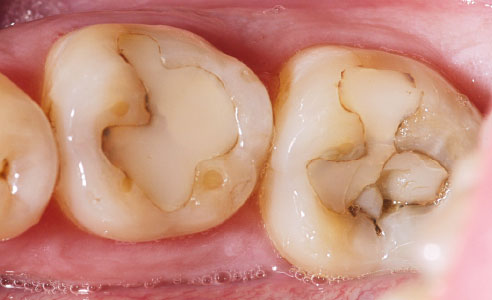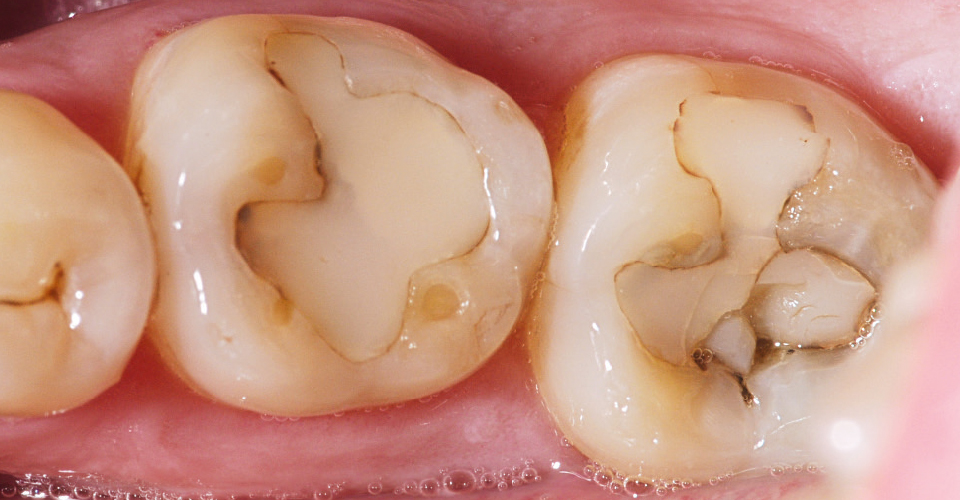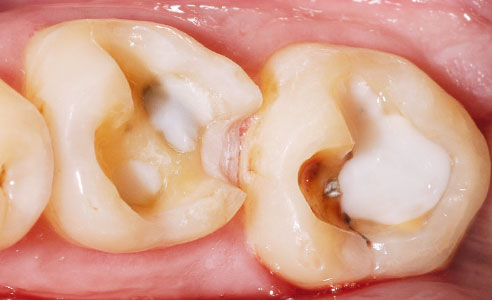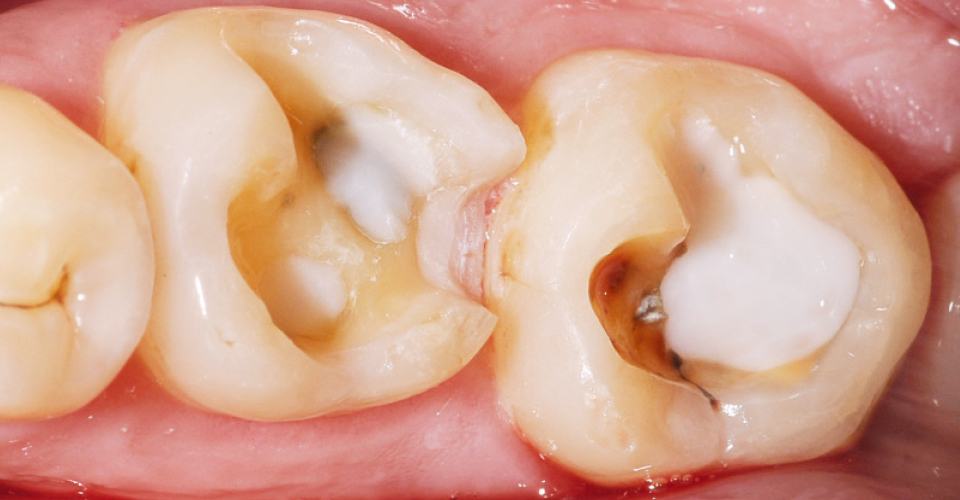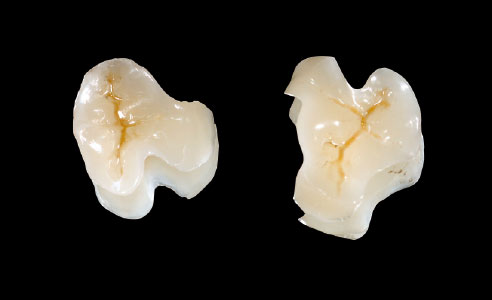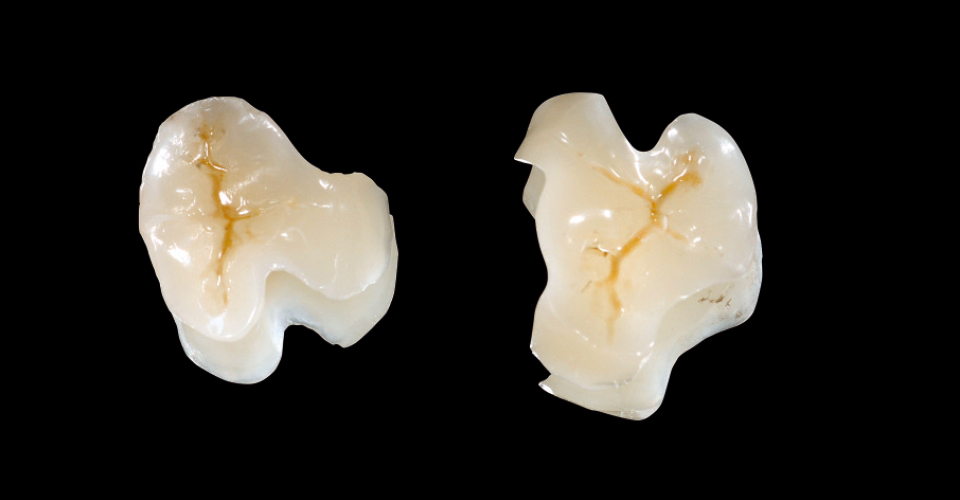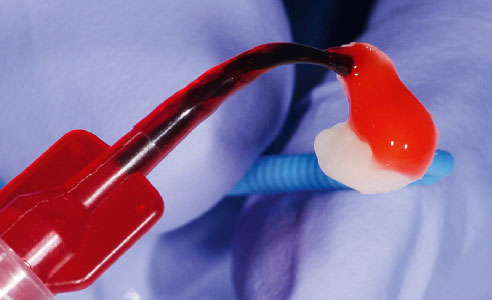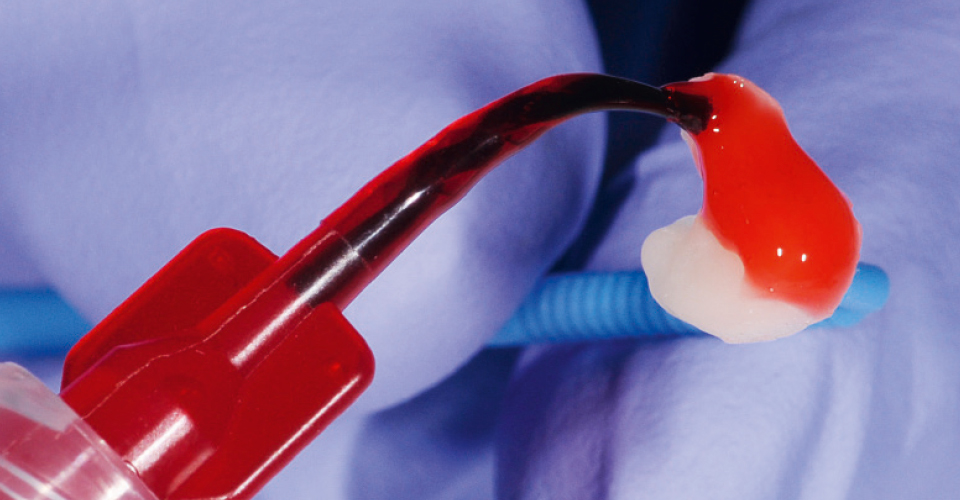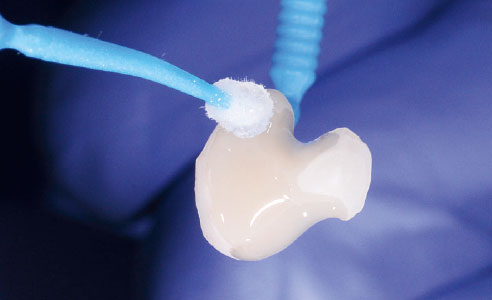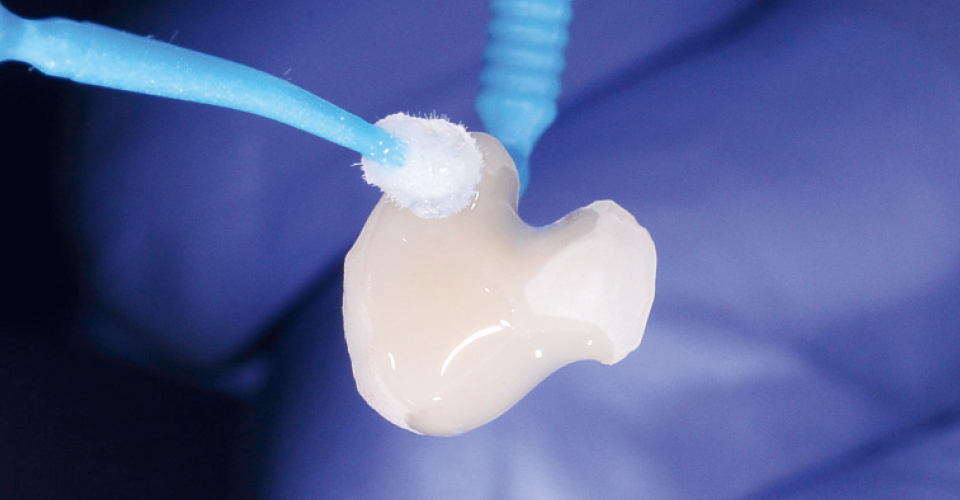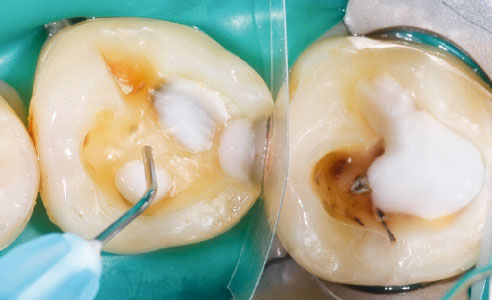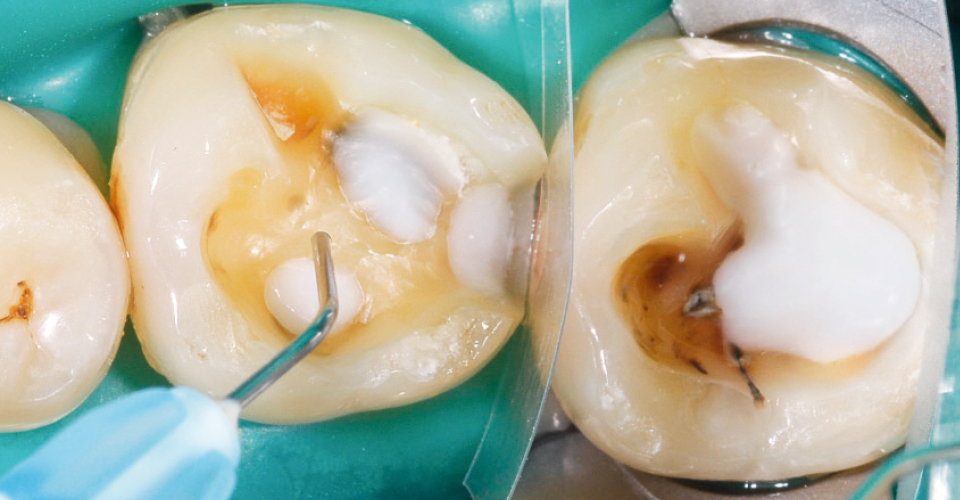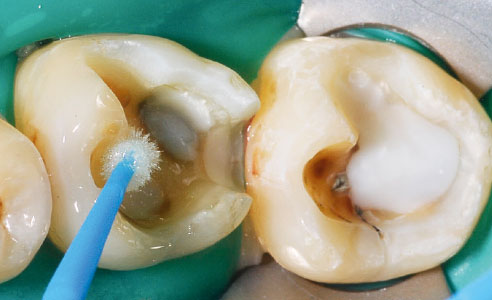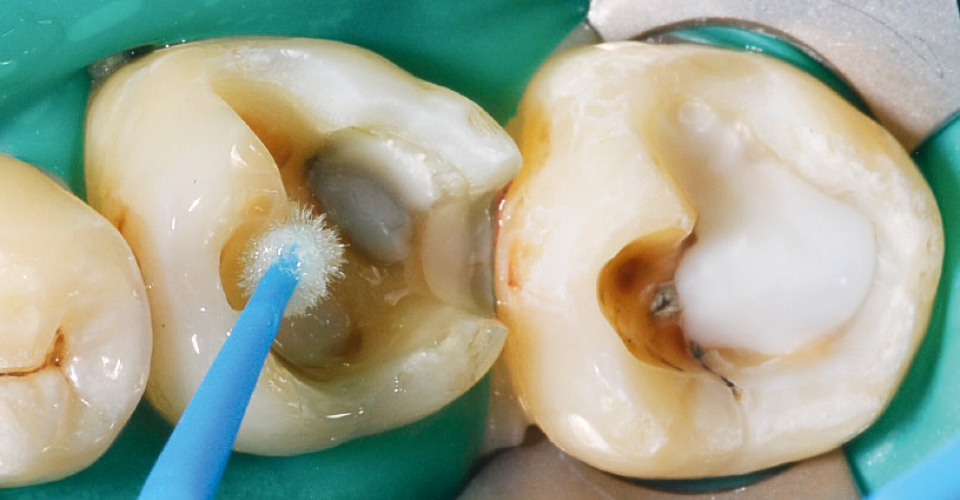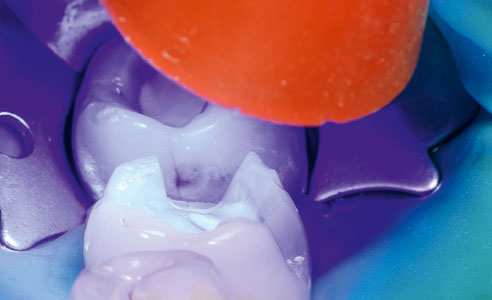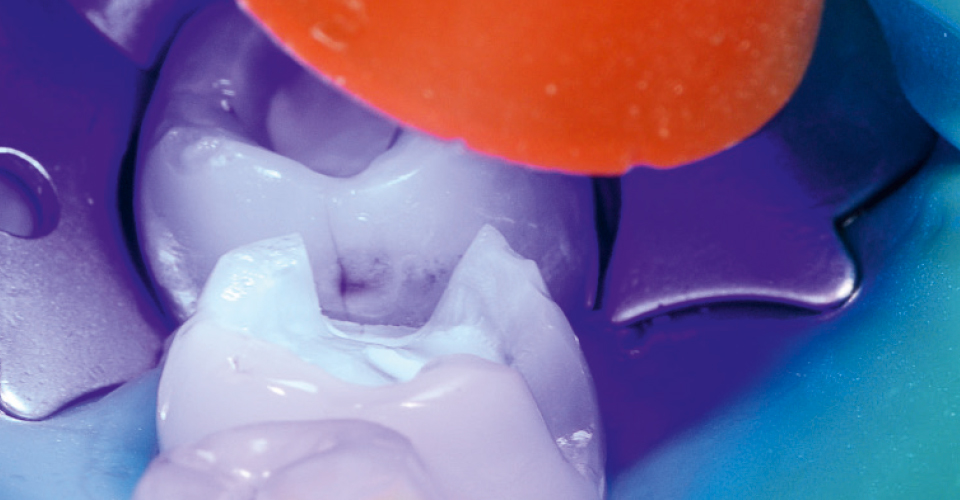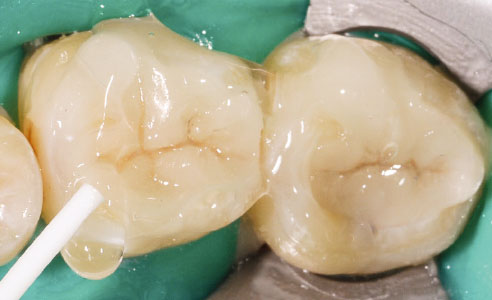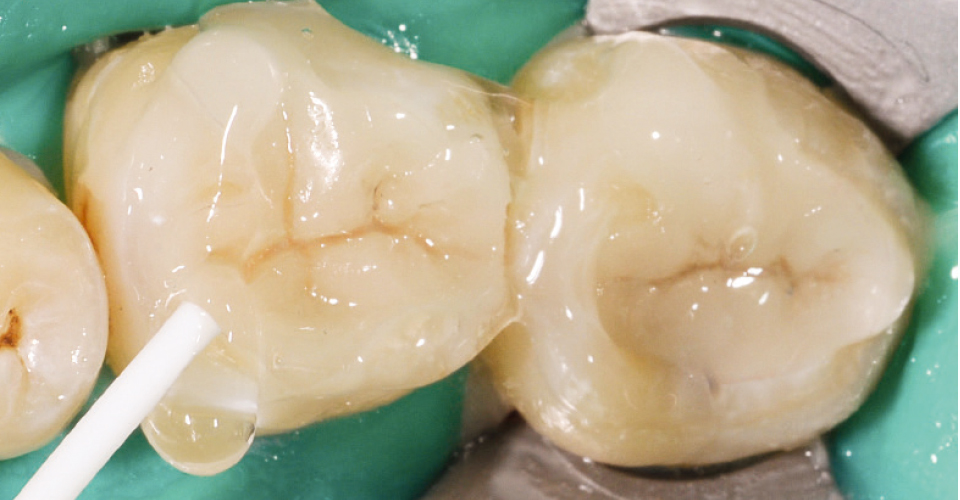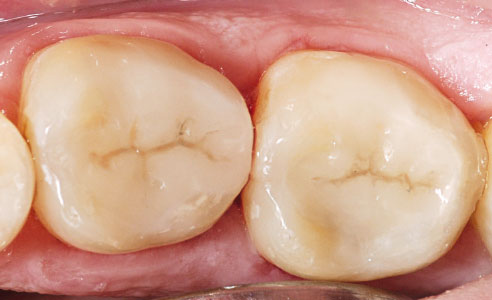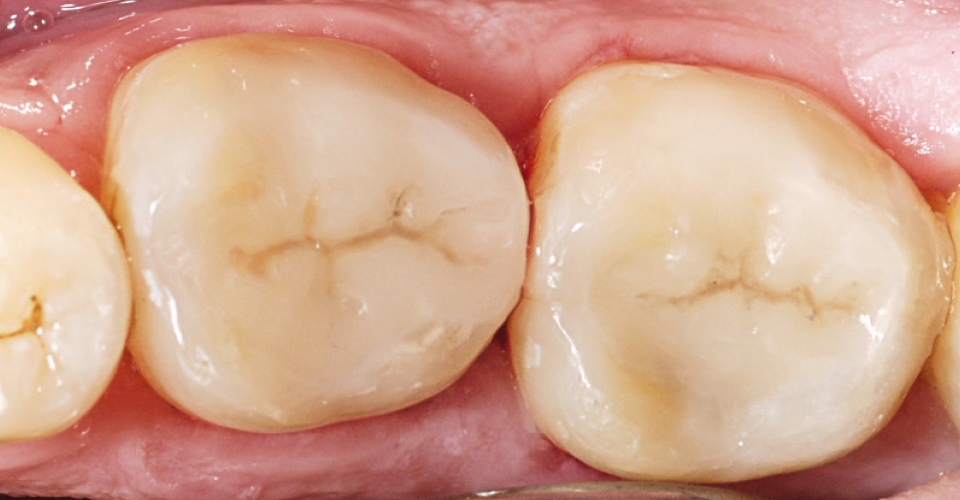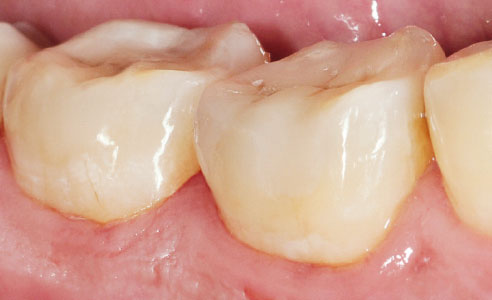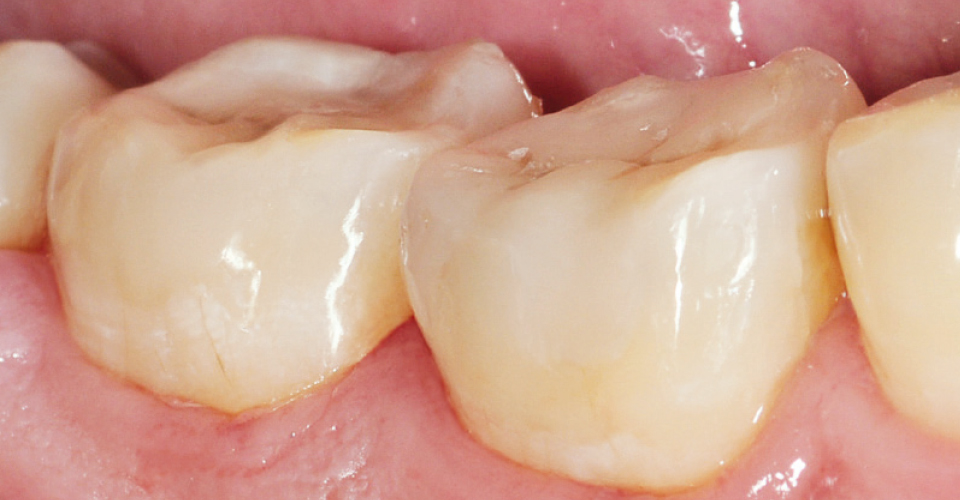Inlays with a chameleon effect made from VITA ENAMIC ST hybrid ceramic
The ideal inlay material should have the ability to be processed efficiently and at the same time, edge-stable in thin edge areas. Incorporation, occlusal grinding and final intraoral polishing should be easy to implement. Optically and functionally, an excellent inlay restoration must "fuse" with the natural hard tooth substance. The following case report by Prof. Dr. Alexander Hassel (Mannheim, Germany) shows to what extent the supertranslucent hybrid ceramic VITA ENAMIC ST can meet these expectations.
1. Initial clinical situation
At the annual checkup, the patient presented with a fractured composite filling on 37, and 36 showed insufficient and stained margins. Radiologically, an additional carious defect was diagnosed distally on 36. The patient wanted new restorations that were long-lasting and tooth-colored. After detailed consultation, the decision was made for two inlays made of the supertranslucent hybrid ceramic VITA ENAMIC ST. This is a material with a dual network structure of ceramic (86 wt%) and polymer (14 wt%).
2. Preparation, impression, fabrication
After excavation and preparation, the areas close to the pulp were adhesively covered with flowable composite, leveled and shaped. The models were digitized in the dental practice laboratory (imetric, Courgenay, Switzerland) to construct the inlays using the exocad software (exocad, Darmstadt, Germany). The restorations were ground with the Milling Unit N4 Impression (vhf, Ammerbuch, Germany) and then worked out manually. For occlusal characterization with the light-curing VITA ENAMIC STAINS, the dominant ceramic network was first etched with hydrofluoric acid and then silanized. After painting the fissures with VITA ENAMIC STAIN 3 (brown) and intermediate curing, the surface of the inlays was sealed with VITA ENAMIC GLAZE and polymerized.
3. Systematic, fully adhesive bonding
The conditioning of the adhesive surfaces was implemented analogously to the conditioning of the occlusal surfaces before staining. Following phosphoric acid etching of the cavities with VITA ADIVA TOOTH-ETCH, the two-coat application and the controlled polymerization of the dual-curing and unfilled bonding agent VITA ADIVA T-BOND I + II was performed. The fit of the inlay was not compromised by the filler. The composite cement VITA ADIVA F-CEM in the shade A2 was applied to the cavities, and the inlays were inserted. VITA ADIVA OXY-PREVENT prevented the formation of an inhibition layer during light curing. Due to the dentin-like modulus of elasticity and the pronounced chameleon effect of the material, the hybrid ceramic restoration integrated into the residual tooth substance extremely well, both functionally and esthetically.
Report 07/18



